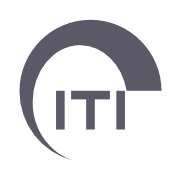Computer-Guided Implant Surgery - Consensus Statements - Home
Contemporary Surgical and Radiographic Techniques, ITI CC 2013
Computer-Guided Implant Surgery
General Comments
Computer-guided (static) surgery is defined as the use of a static surgical template that reproduces virtual implant position directly from computerized tomographic data and does not allow intraoperative modification of implant position. Reports on the use of computer-guided implant surgery have increased over the past years. In addition to avoidance of damage to vital anatomic structures and accomplishing full-arch immediate loading, applications now also include partially edentulous situations.
Although more data are now available, it is still difficult to compare reported treatment outcomes due to a number of factors, such as insufficiently defined preoperative parameters or the variety of therapeutic approaches. In addition, the impact of computer-guided software programs available on the market in treatment planning remains insufficiently defined.
Consensus Statements
- Implants placed utilizing computer-guided surgery with a follow-up period of at least 12 months demonstrate a mean survival rate of 97.3% (n = 1,941), which is comparable to implants placed following conventional procedures.
- There are significantly more data to support the accuracy of computer-guided implant surgery compared to 2008. Meta-analysis of the accuracy revealed a mean error of 0.9 mm at the entry point (n = 1,530), 1.3 mm at the implant apex (n = 1,465), and a mean angular deviation of 3.5 degrees (n = 1,854) with a wide range in all measurements.
- Mucosa-, tooth-, and mini-implant–supported templates demonstrated accuracy of implant placement superior to that of bone-supported guides.
- After template osteotomy preparation, the accuracy of template implant insertion was superior to freehand implant insertion.
Treatment Guidelines
- Guided surgery should be viewed as an adjunct to, not a replacement for, appropriate diagnosis and treatment planning.
- Guided surgery should always be prosthetically driven. This includes either a radiographic template generated from a wax-up, or appropriate software application to create a digital wax-up.
- Information to be gathered from the combination of high-quality CBCT images and digital planning should include locations of vital structures, desired implant positions and dimensions, the need for augmentation therapy, and the planned prostheses.
- Due to the reported mean deviations, an additional 2 mm should be taken into consideration when planning implant position with relation to vital structures and adjacent implants in all directions. In borderline cases, an intraoperative periapical radiograph should be taken as a safety measure.
- Guided surgery may be utilized with a flapless or raised flap approach.
- Only mucosal- and/or tooth- or implant-supported surgical templates should be utilized.
- For improved accuracy, implants should be inserted in a fully guided manner (versus guided implant bed preparation alone) whenever possible.
- Guided surgery may be used with different loading protocols, in partially and fully edentulous indications.
- Indications for guided surgery include: to aid in treatment planning, when encountering complex anatomy, to perform minimally invasive surgery, and to improve patient understanding of therapeutic needs and treatment options.
Downloads and References
Share this page
Download the QR code with a link to this page and use it in your presentations or share it on social media.
Download QR code